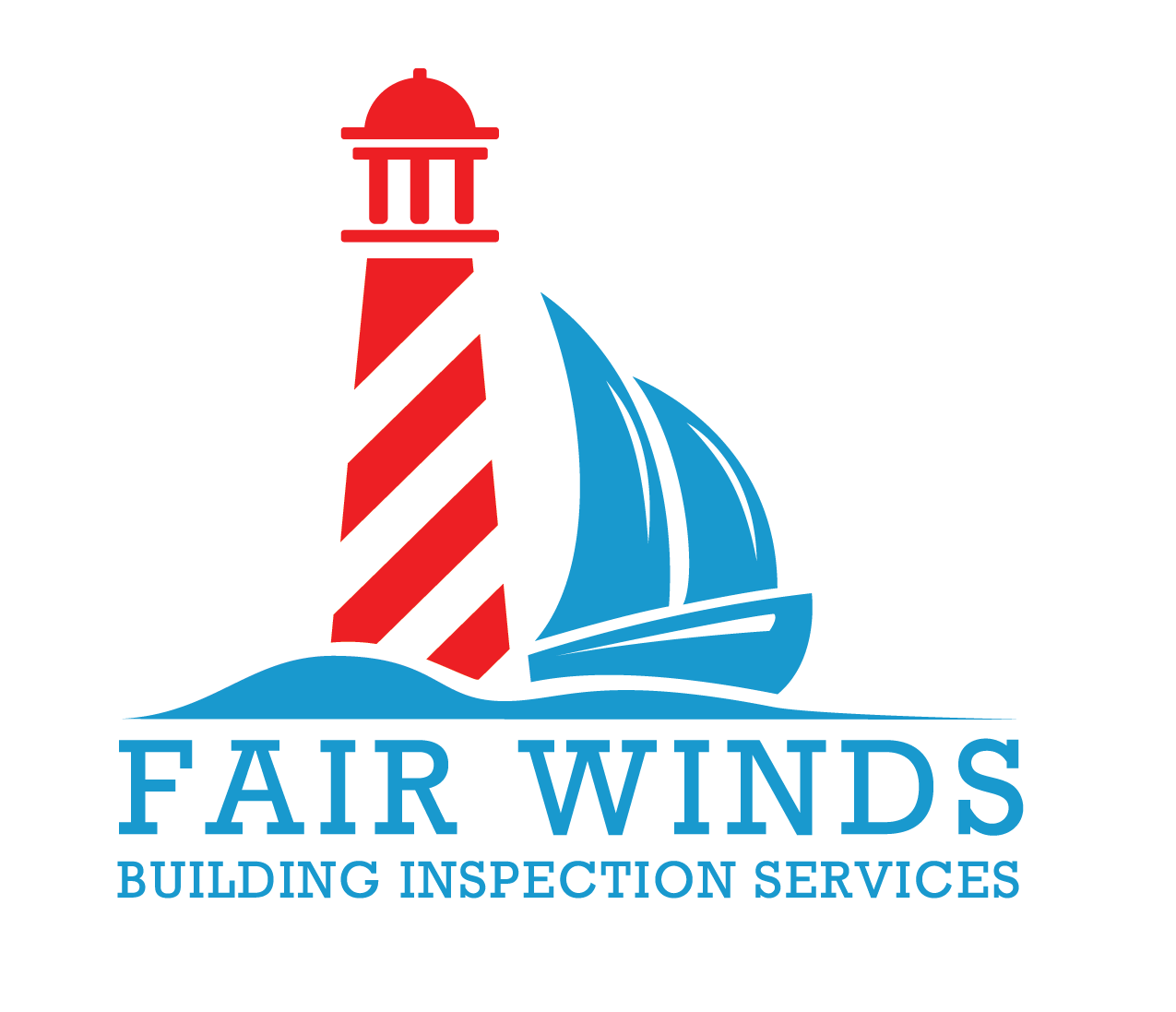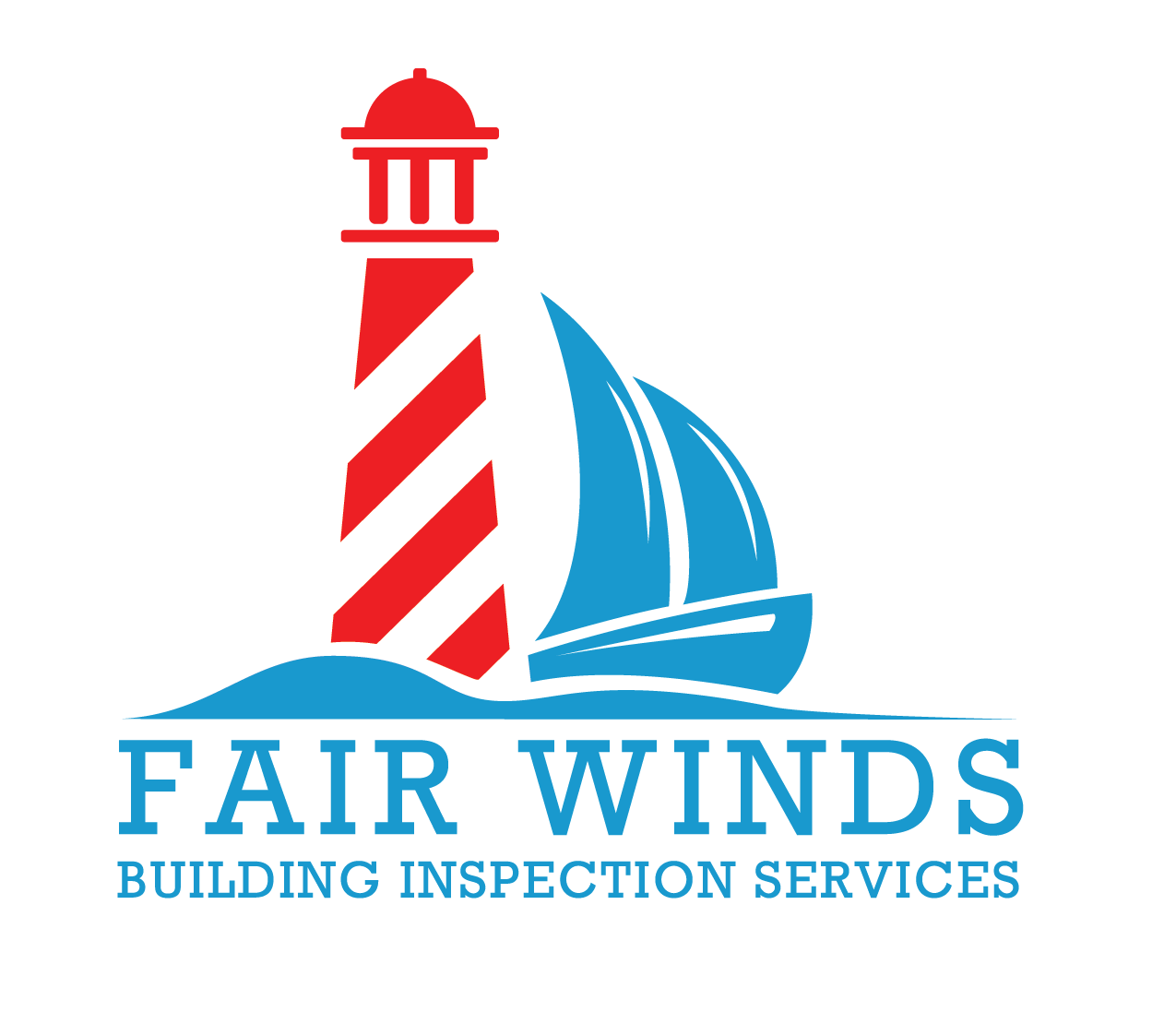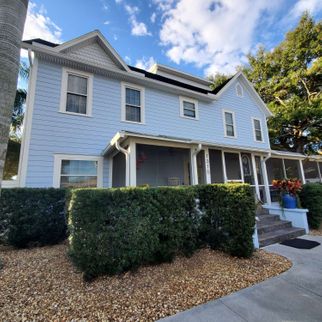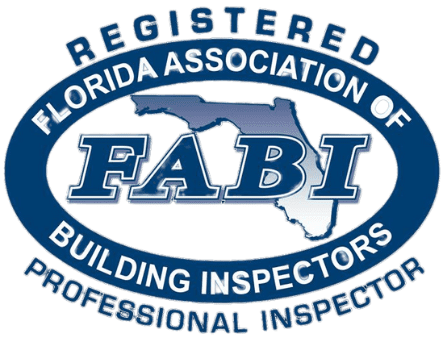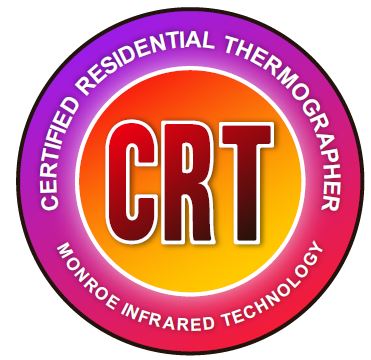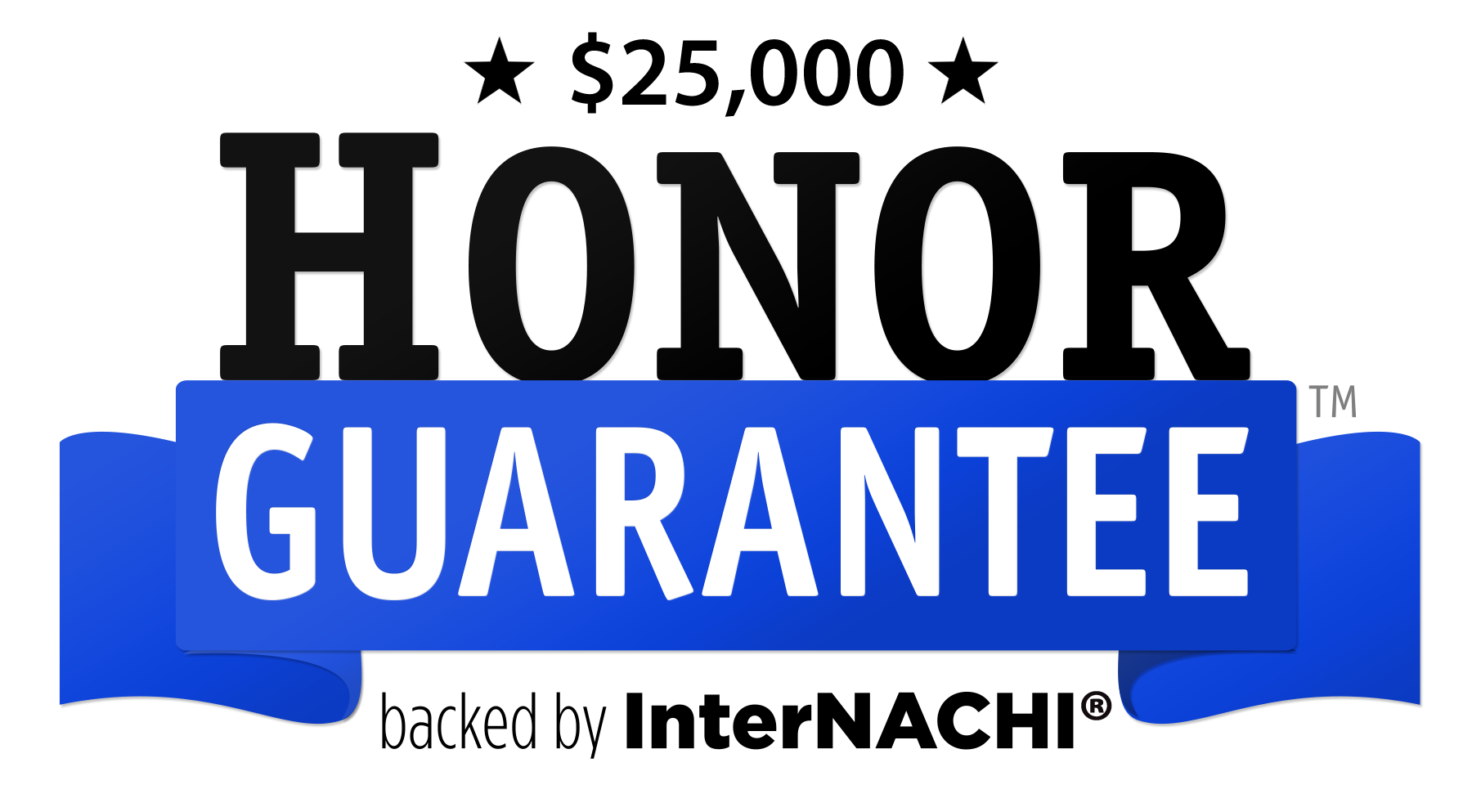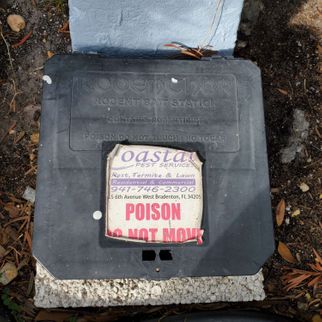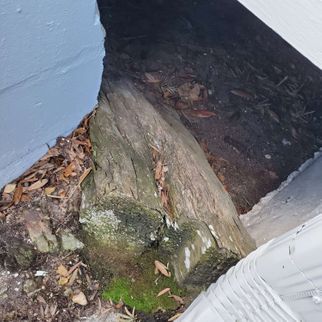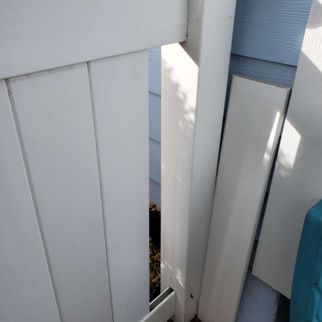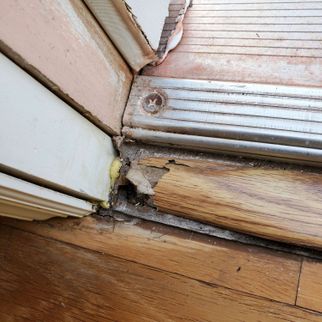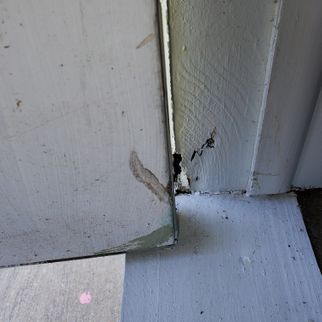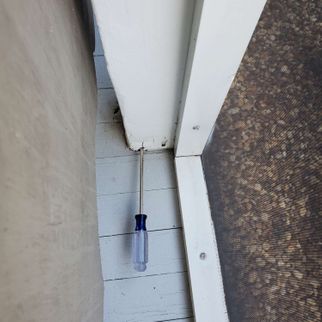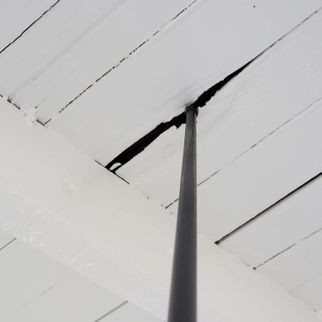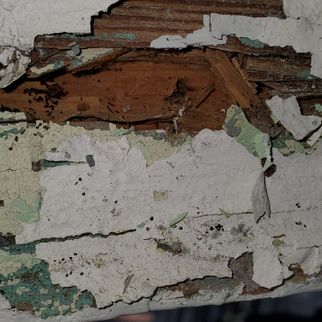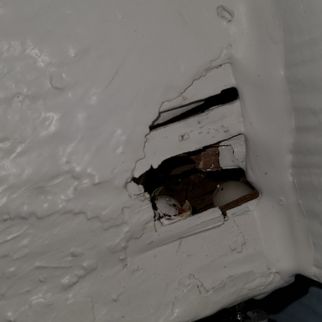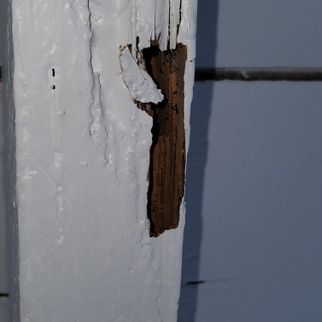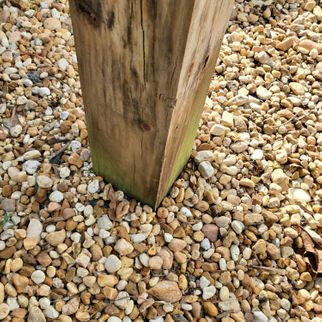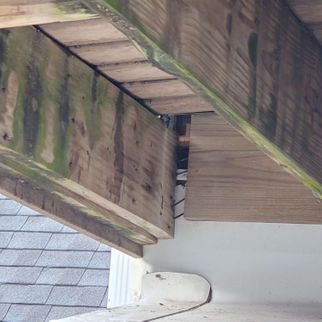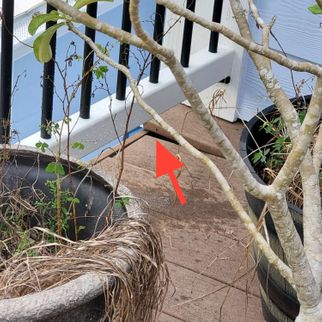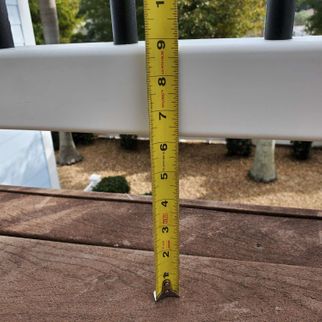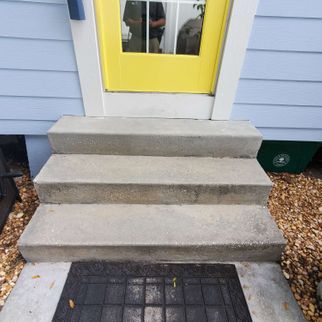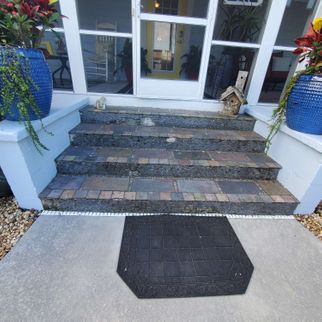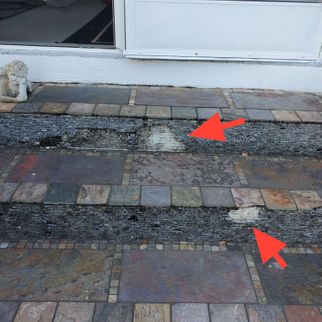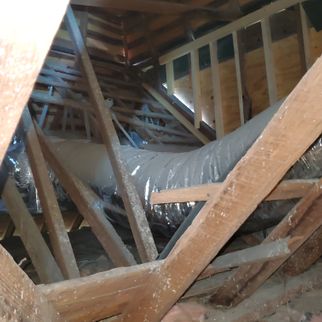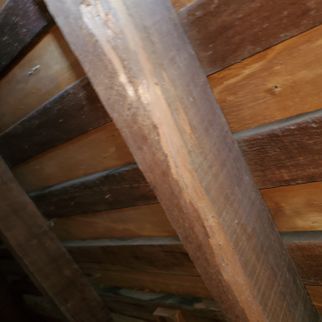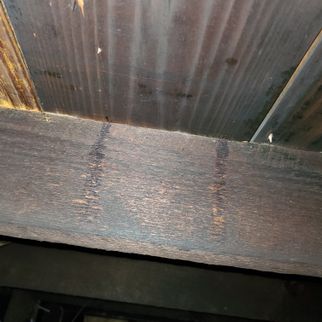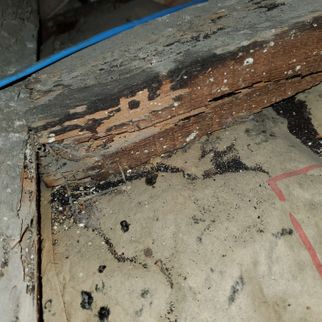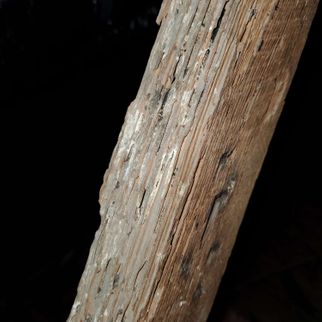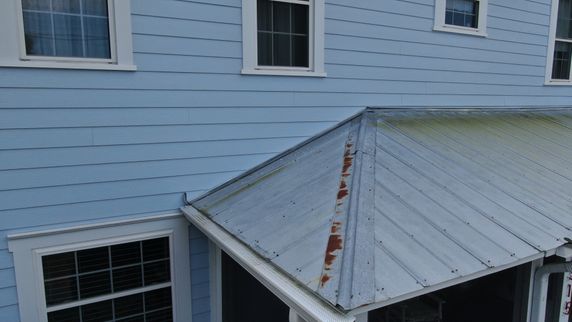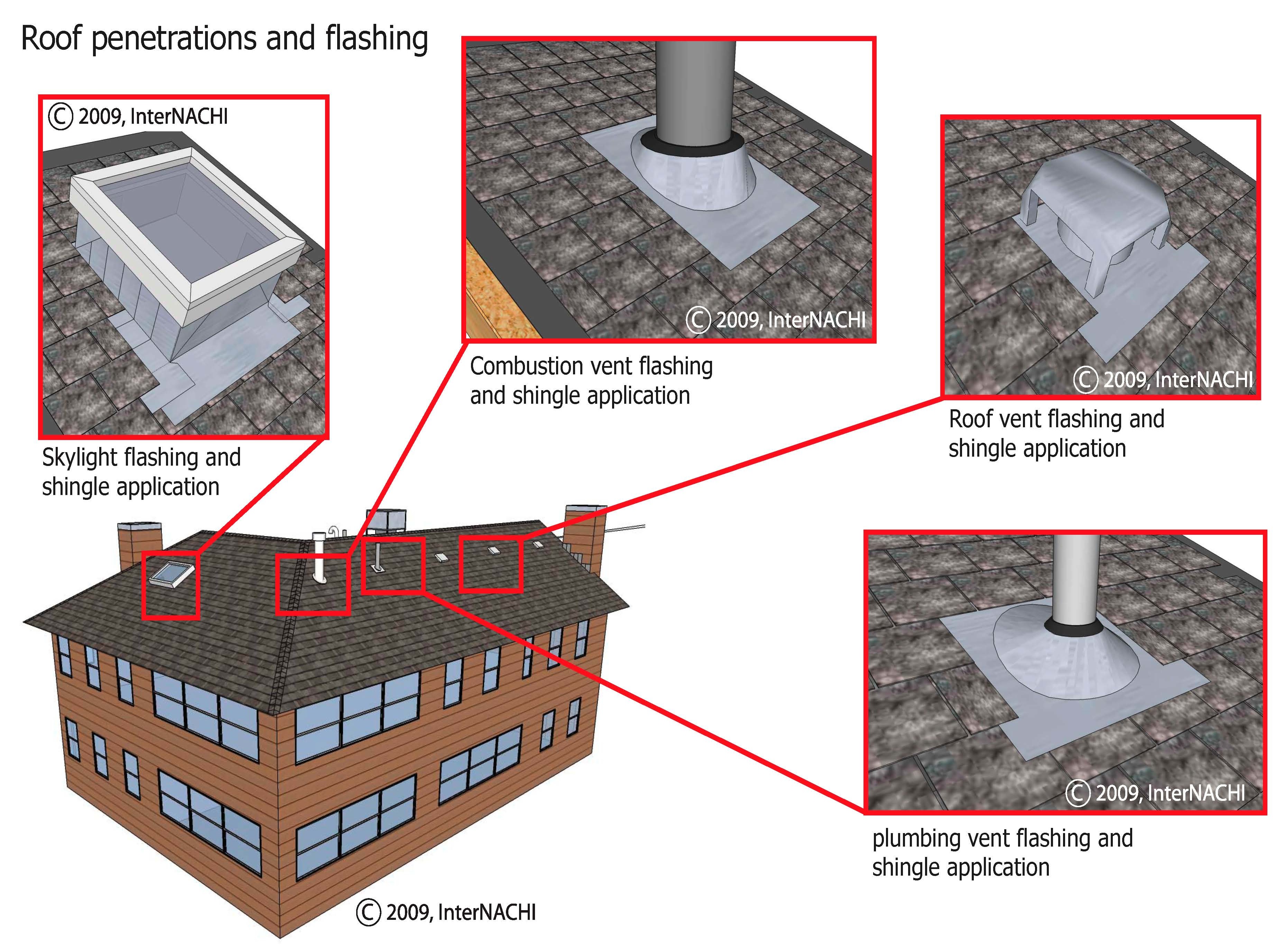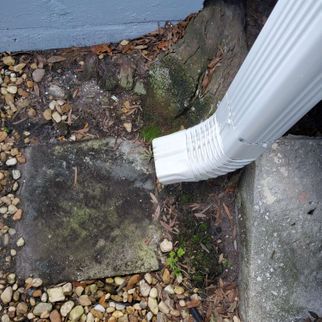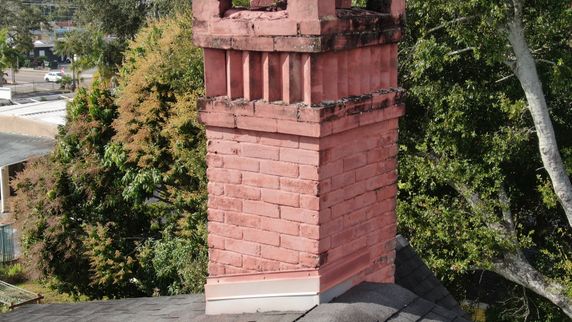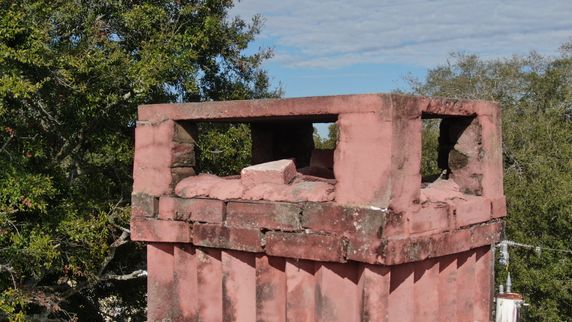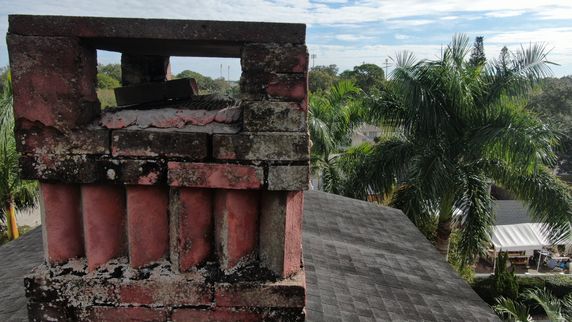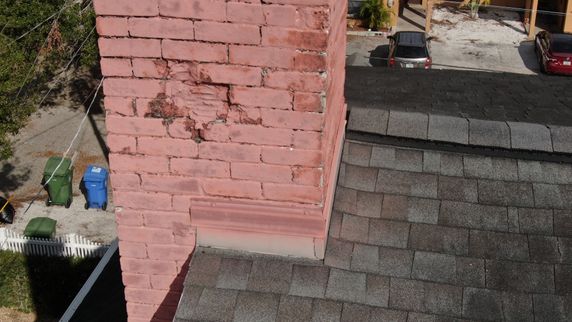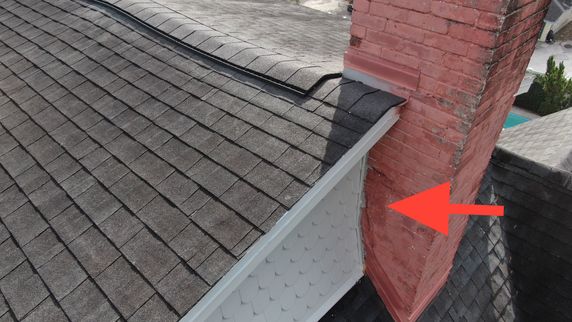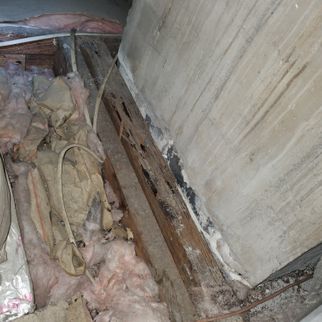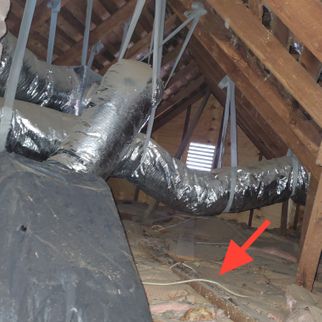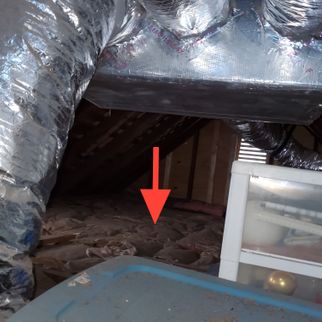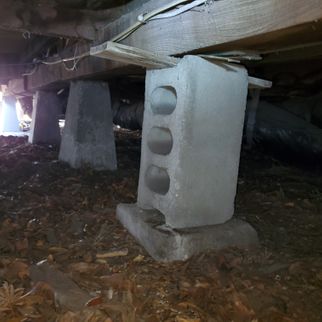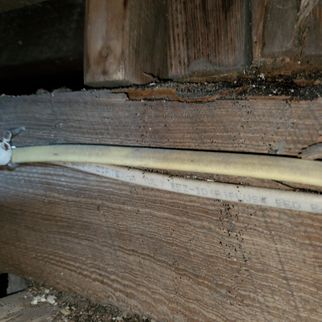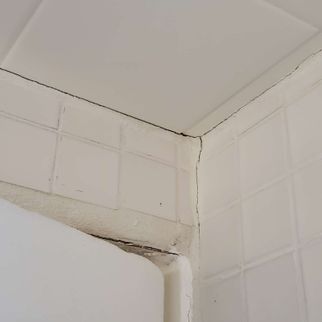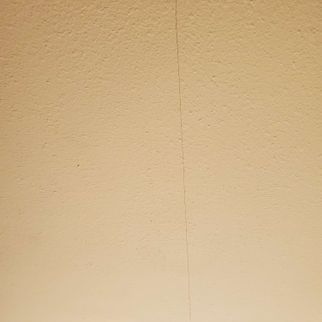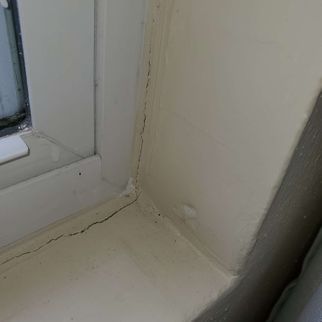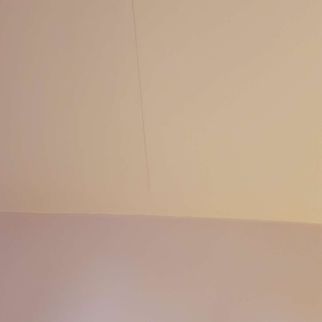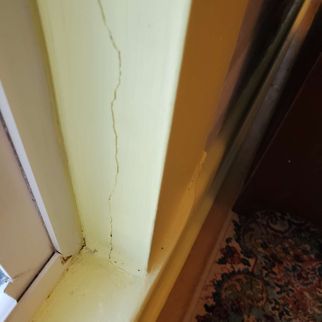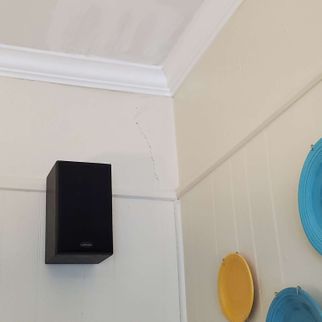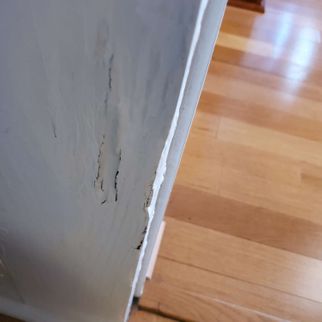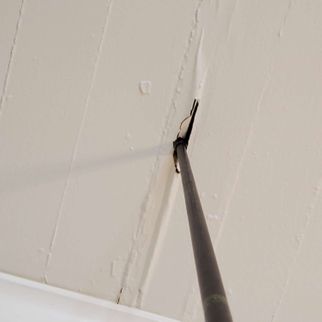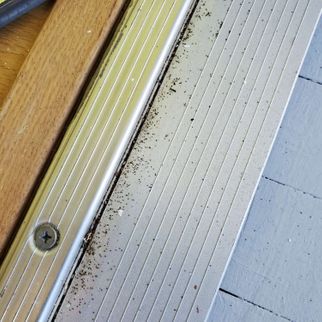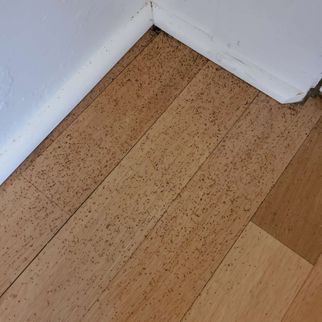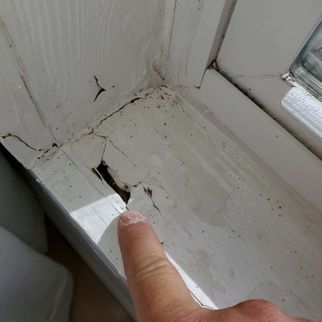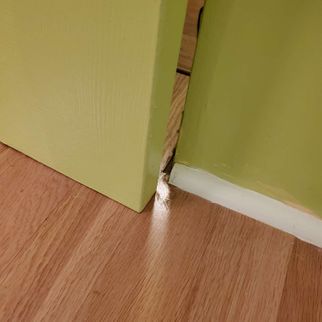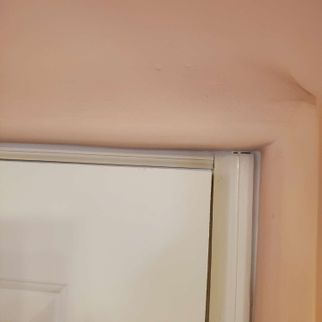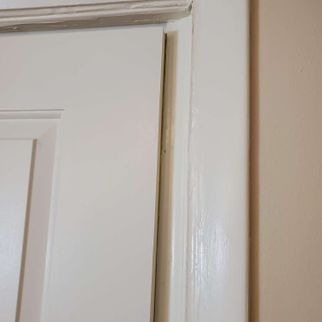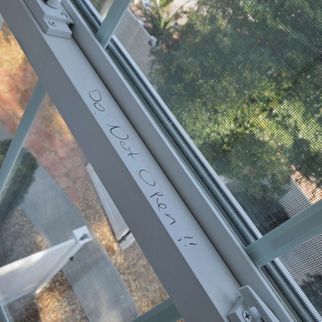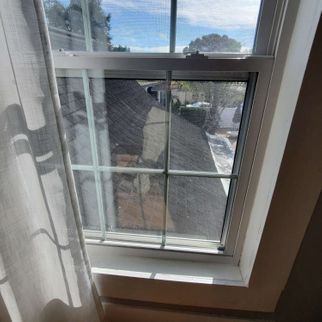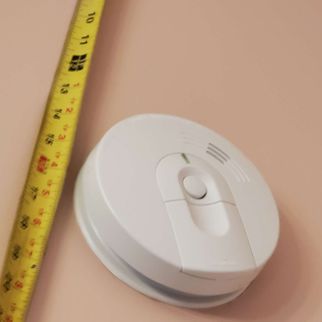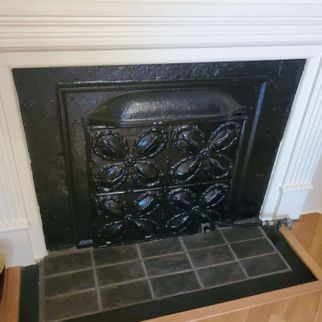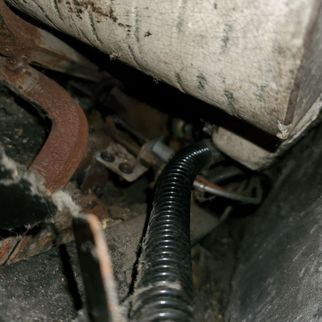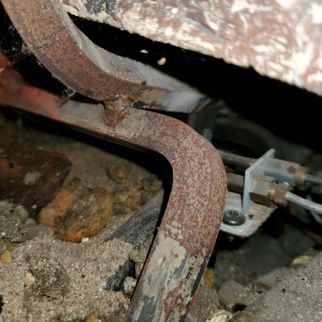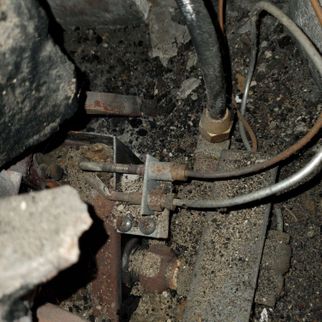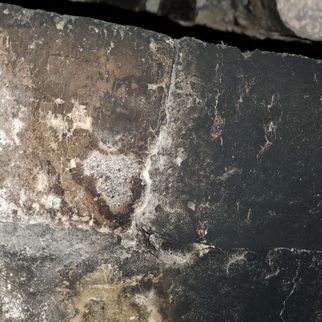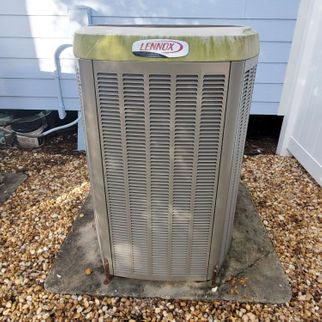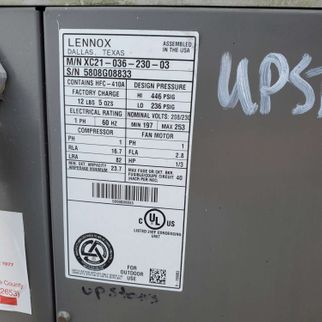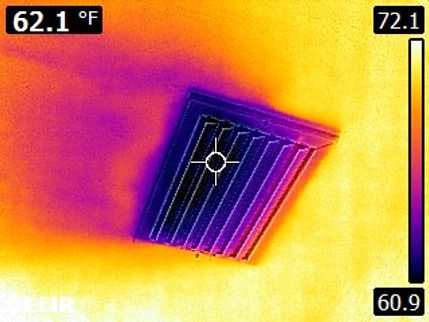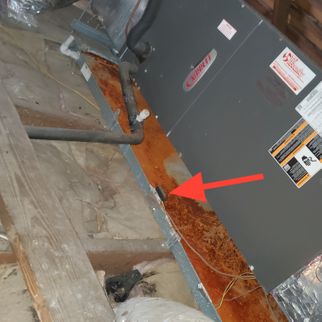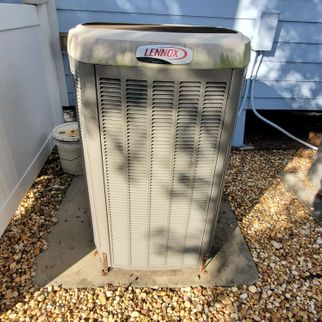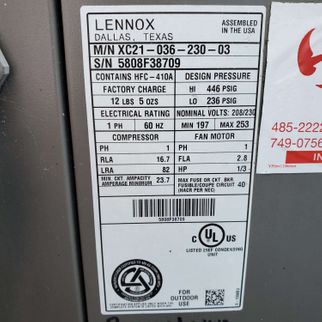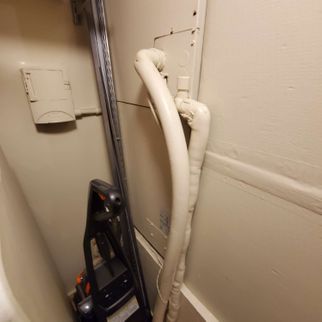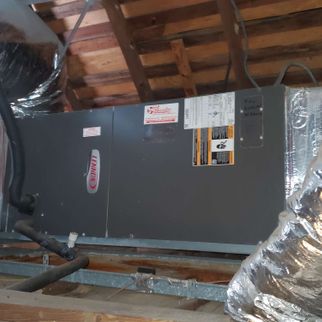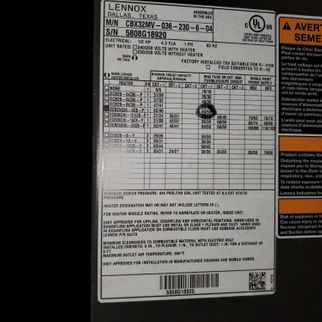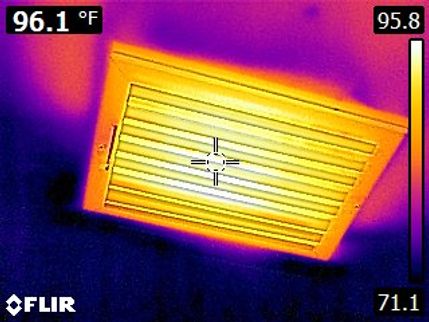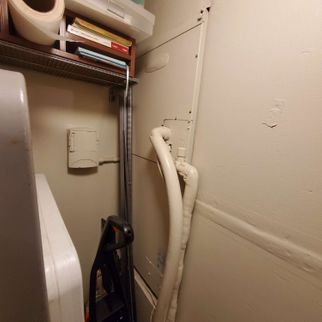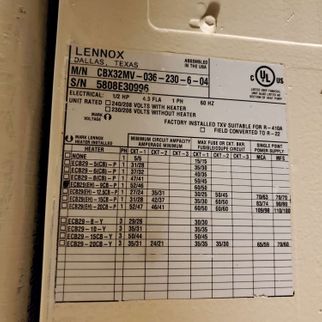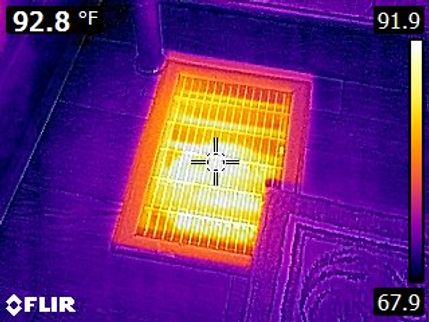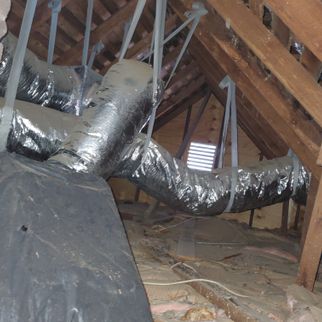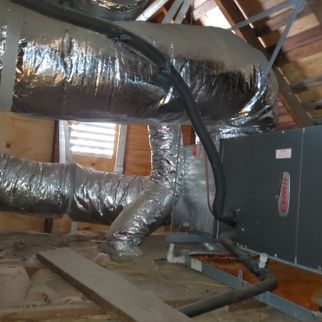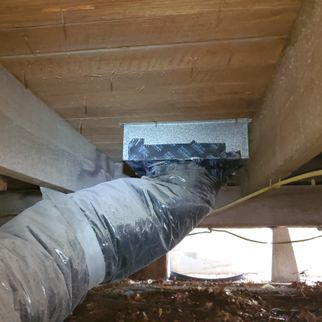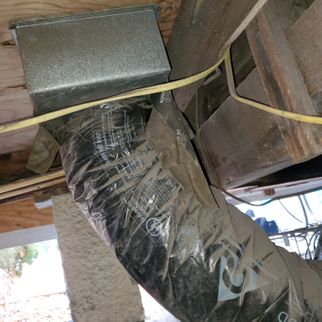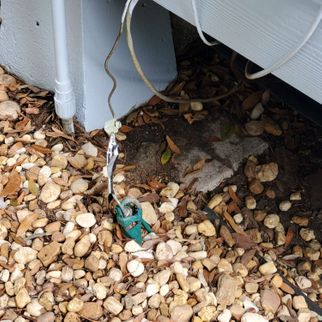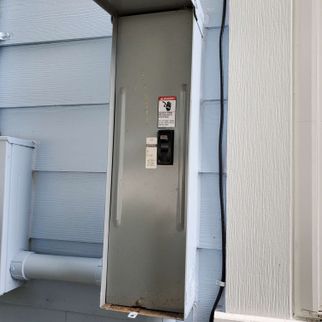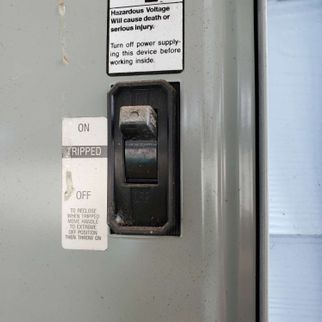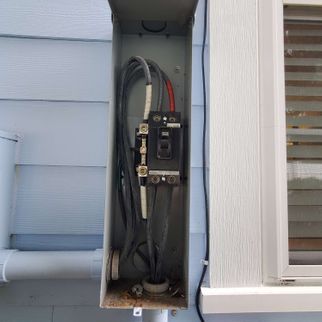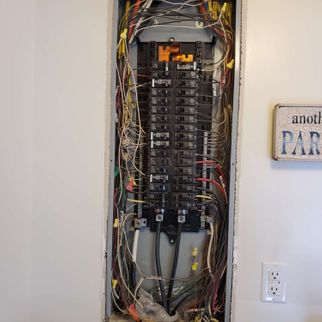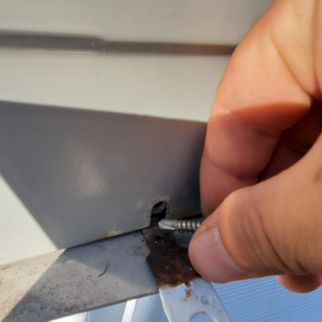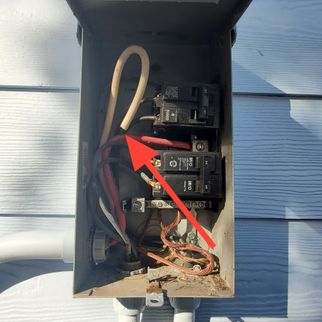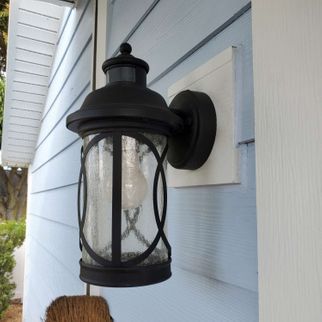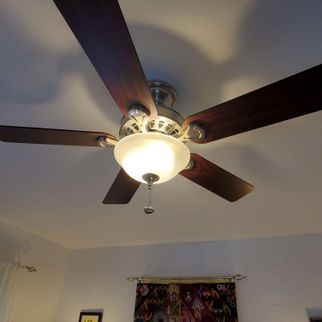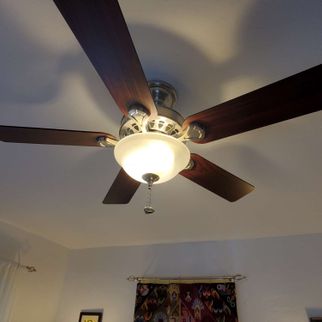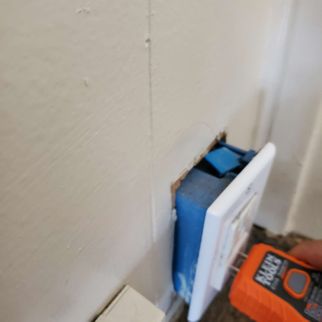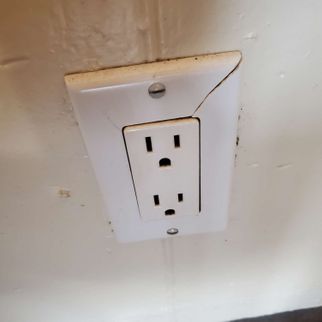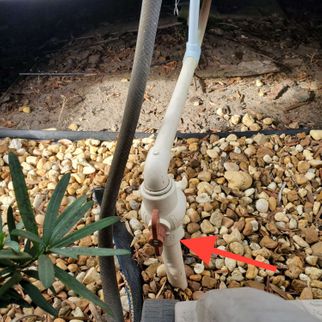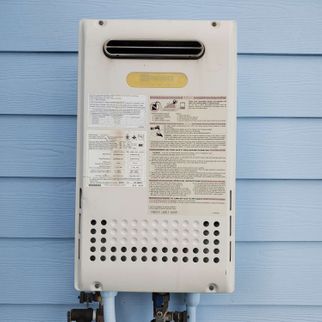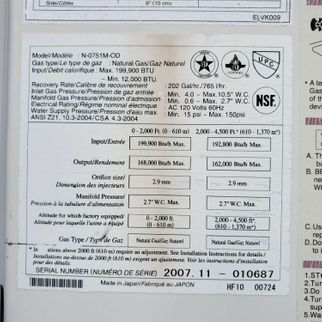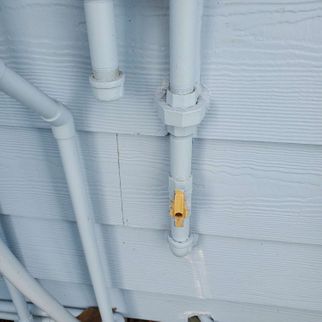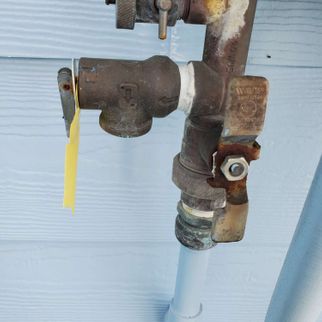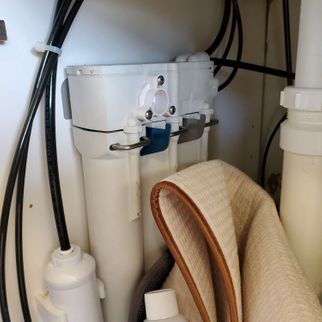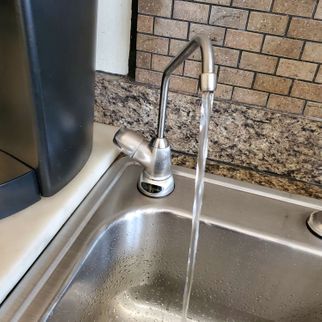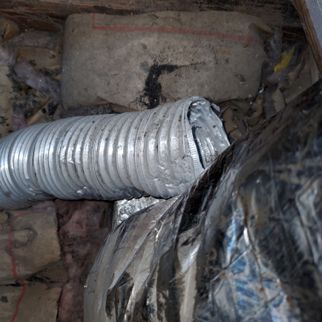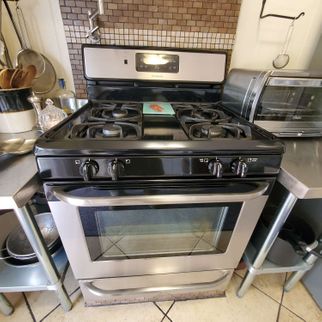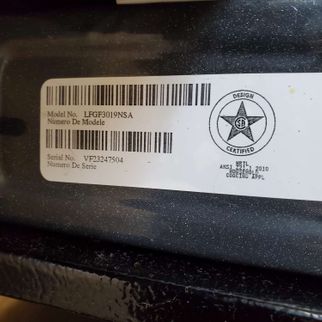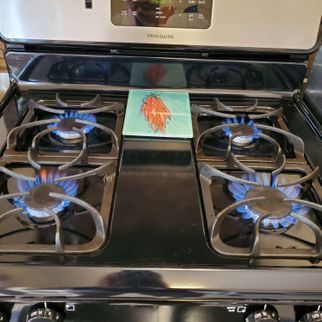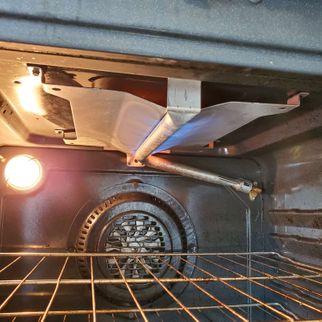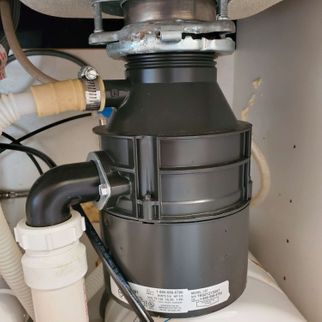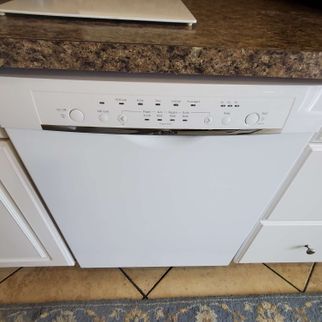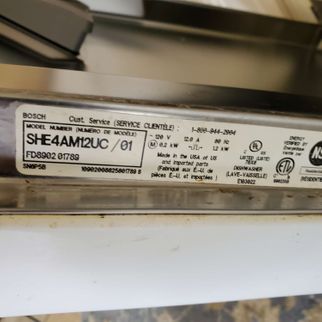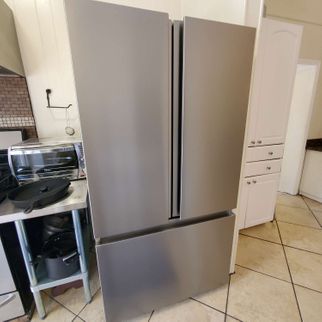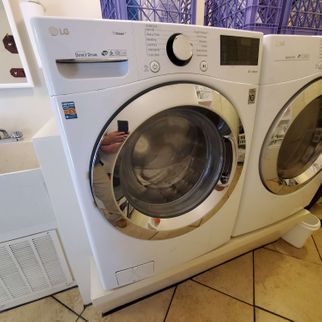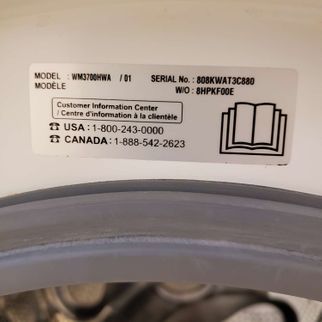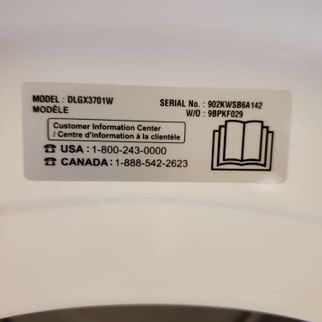
Sang Park, FL State License #HI12491, MRSA4846, JE319992
THIS REPORT IS FOR THE EXCLUSIVE USE OF THE CLIENT LISTED ON THIS REPORT. USE BY ANY OTHER PERSONS WITHOUT THE EXPRESS CONSENT OF FAIR WINDS BUILDING INSPECTION SERVICES, LLC. WILL BE A VIOLATION OF A CONTRACTUAL AGREEMENT AND WILL IMMEDIATELY NULLIFY THE REPORT.
The Scope and Purpose
This report outlines the scope and purpose of various inspections offered by Fair Winds Building Inspection Services. In addition to a standard home inspection, some clients may request ancillary inspections, such as a 4-Point Inspection, Wind Mitigation Inspection, or Swimming Pool Inspection. Your inspection may or may not include these ancillary inspections. The specific inspections performed for your property are listed in your agreement and detailed in the main part of this report. If you have any questions about which inspections were conducted, please refer to those sections or contact me directly.
Residential Inspection
The purpose of a home inspection is to help reduce the risk associated with the purchase of a structure by providing a professional opinion about the overall condition of the structure. A home inspection is a limited visual inspection and it cannot eliminate this risk completely. Some homes present more risks than others. I cannot control this, but I try to help educate you about the condition of the property during the inspection process. This is more difficult to convey in a report and one of many reasons why I recommend that you attend the inspection.
This inspection process followed the Florida Department of Business and Professional Regulation Standards of Practice (SOP). The SOP is provided at the end of the report for your reference. There may be comments made in this report that exceed the FL Standards of Practice; these comments (if present) were made as a courtesy to give you as much information as possible about the home. Exceeding the Standards of Practice will only happen when I feel I have the experience, knowledge, or evidence to do so. There should be no expectation that the Standards of Practice will be exceeded throughout the inspection. This inspection and report are not intended to be technically exhaustive. The observations in this report are the opinions of the home inspector. Other inspectors and contractors are likely to have some differing opinions. You are welcome to seek opinions from other professionals.
4-Point Inspection
A “four-point” inspection is a limited visual inspection of the residential structure. A four-point inspection is not exhaustive and is limited to a visual inspection of the four systems and components, which include: 1) the electrical panel and any visible wiring; 2) the plumbing system and any visible pipes; 3) the HVAC system and any visible connections; and, 4) the roof covering and any visible issues. This inspection is not as comprehensive as a full home inspection and is intended only to assess the general condition of these systems.
Wind Mitigation Inspection
A wind mitigation verification inspection is conducted to determine whether a home has specific features designed to withstand strong winds. This inspection is limited to the items listed on the Uniform Mitigation Verification Inspection Form and does not assess other home components. The purpose of this inspection is to verify wind-resistant construction features that may qualify the homeowner for insurance discounts. However, this inspection does not guarantee that a home can withstand severe weather events.
Swimming Pool and Spa Inspection
The purpose of pool and/or span inspection is a) to identify conditions that, in the professional opinion of the Inspector, are significantly deficient or b) to identify systems and components of the pool/spa that are at the end of their service lives in order to help reduce the risk associated with the pool/spa are included in the property. This inspection is a limited visual inspection and it cannot eliminate this risk. Some systems or components present more risks than others. We cannot control this, but we try to help educate you about what we don’t know during the inspection process. This is more difficult to convey in a report and one of many reasons why we recommend that you attend the inspection.
This inspection process followed the American Society of Home Inspectors (ASHI) Standards of Practice (SOP). The SOP is provided at the end of the report for your reference. There may be comments made in this report that exceed the Standards of Practice; these comments (if present) were made as a courtesy to give you as much information as possible about the home. Exceeding the Standards of Practice will only happen when I feel I have the experience, knowledge, or evidence to do so. There should be no expectation that the Standards of Practice will be exceeded throughout the inspection. This inspection and report are not intended to be technically exhaustive. The observations in this report are the opinions of the home inspector. Other inspectors and contractors are likely to have some differing opinions. You are welcome to seek opinions from other professionals.
Wood-Destroying Organism (WDO) Inspection
The Inspector, or a subcontractor, will conduct a visual inspection of the readily accessible areas of the Property, including attics and crawlspaces, where access is permitted at the time of inspection. The inspection may involve probing or sounding in unobstructed and accessible areas to identify any visual evidence of wood-destroying organisms. Wood-destroying organisms include termites, carpenter ants, carpenter bees, powder post beetles, old house borers, and wood-decaying fungi. This inspection does not cover mold, mildew, fungi other than wood-decaying fungi, or other non-insect wood-destroying organisms. The Inspector is not responsible for repairing any damage or treating any infestation.
Additionally, wood-destroying organisms may be present in concealed or inaccessible areas. If the written report states that no visible evidence of wood-destroying organisms was found, it does not guarantee that none exist. Damage may have already begun in areas that were not visible or accessible during the inspection. The inspection will be performed in accordance with Florida Department of Agriculture and Consumer Services standards, as outlined in Chapter 482.226 of the Florida Statutes and Chapter 5E-14.142(2)(c) of the Florida Administrative Code. These regulations include specific limitations, exceptions, and exclusions. If any conflict arises, Florida law will take precedence.
System/Component Update Inspection
This inspection is limited to evaluating the specific items documented in this report to determine whether any visually identifiable deficiencies persist. It does not assess the quality, professionalism, or appropriateness of any repairs made. Repairs to previously identified deficiencies should be performed by licensed and qualified professionals with expertise in addressing the specific issues identified. I recommend that the client obtain copies of all paid receipts and warranties for completed work to verify that the repairs were performed by licensed professionals.
This inspection process followed the Florida Department of Business and Professional Regulation Standards of Practice (SOP). The SOP is provided at the end of the report for your reference. There may be comments made in this report that exceed the FL Standards of Practice; these comments (if present) were made as a courtesy to give you as much information as possible about the home. Exceeding the Standards of Practice will only happen when I feel I have the experience, knowledge, or evidence to do so. There should be no expectation that the Standards of Practice will be exceeded throughout the inspection. This inspection and report are not intended to be technically exhaustive. The observations in this report are the opinions of the home inspector. Other inspectors and contractors are likely to have some differing opinions. You are welcome to seek opinions from other professionals.
The descriptions and observations in this report are based on a visual inspection of the property. I inspect the property without dismantling, damaging, or disfiguring and without moving furniture and interior furnishings. This inspection does not cover certain areas that are concealed, hidden, or inaccessible to view. Some systems cannot be tested during this inspection as testing risks damaging the system or the structure. For example, a heat pump is not generally tested if the outside temperature is above 85 degrees Fahrenheit according to most manufacturers' recommendations. The inspection procedures involved non-invasive investigation and non-destructive testing which would limit the scope of the inspection.
This inspection and report are not intended for city / local code compliance. During the construction process structures are inspected for code compliance by municipal inspectors. Framing is open at this time and conditions can be fully viewed. Framing is not open during inspections of finished homes, and this limits the inspection. All houses fall out of code compliance shortly after they are built, as the codes continually change. National codes are augmented at least every three years for all of the varying disciplines. Municipalities can choose to adopt and phase in sections of the codes on their own timetables. There are generally no requirements to bring older homes into compliance unless substantial renovation is being done.
How to Read This Report
Getting the Information to You
This report is designed to deliver important and technical information in a way that is easy for anyone to access and understand. If you are in a hurry, you can take a quick look at our "Summary Page” and quickly get critical information for important decision making. However, I strongly recommend that you take the time to read the full Report, which includes digital photographs, captions, diagrams, descriptions, videos and hot links to additional information.
The best way to get the layers of information that are presented in this report is to read your report online (the HTML version), which will allow you to expand your learning about your house. You will notice some words or series of words highlighted in blue and underlined – clicking on these will provide you with a link to additional information. The HTML version of this report also contains streaming videos. Short video clips often contain important information and critical context and sounds that can be difficult to capture in words and still pictures.
For the most reliable viewing experience, I recommend viewing the report on as large a screen as practical, as much detail can be lost on small devices like smart phones. For similar reasons, reports should only be printed in color to retain as much detail as possible and minimize misinterpretation of photographs.
This report can also be printed on paper or to a PDF document.
Chapters and Sections
This report is divided into chapters that parcel the home into logical inspection components. Each chapter is broken into sections that relate to a specific system or component of the home. You can navigate between chapters with the click of a button on the left side margin.
Most sections will contain some descriptive information done in black font. Observation narrative, done in colored boxes, will be included if a system or component is found to be significantly deficient in some way or if we wish to provide helpful additional information about the system or the scope of our inspection. If a system or component of the home was deemed to be in satisfactory or serviceable condition, there may be no narrative observation comments in that section and it may simply say “tested,” or “inspected.”
Observation Labels
All narrative observations are colored, numbered and labeled to help you find, refer to, and understand the severity of the observation. Observation colors and labels used in this report are:
- Repair:Repair and maintenance items noted during inspection. Please note that some repair items can be expensive to correct such as re-finishing hardwood floors, but are considered simply repair items due to their cosmetic nature.
- Recommended Maintenance:These are repair items that should be considered "routine home ownership items," such as servicing the furnace, cleaning the gutters or changing the air filters in the furnace.
- Due Diligence:thoroughly investigating the property to ensure there are no hidden issues or surprises.
- Description:Detailed description of various aspects of the property noted during the inspection.
- Limitation:Explanation of inspection limitations
- Note:Refers to a side information and/or any comments elaborating on descriptions of systems in the home.
- Homeowner's Responsibility:Your responsibilities as a homeowner
Summary Page
The Summary Page is designed as a bulleted overview of all the observations noted during inspection. This helpful overview is not a substitution for reading the entire inspection report. The entire report must be read to get a complete understanding of this inspection report as the Summary Page does not include photographs or photo captions.
Property Orientation
All locations of the exterior components were given as if you are standing outside and facing the front of the house. The bedrooms and the bathrooms were numbered, going clockwise from the garage entrance door and/or at the top of the stairs when multiple bedrooms/bathrooms existed on the same floor, i.e. bedroom 1, bedroom 2, and master bedroom.
How to Build a Repair Request
To see how to build a custom PDF summary list, built from any number of items in this report, please review this video. The idea behind this feature is to allow the readers of this report to build their own custom lists. These could be used as a tool for inspection responses, or for requesting re-inspection of specific items or for documenting work that has been completed as part of a pre-listing inspection.
No house is perfect. Anything in these categories should be addressed as soon as possible. Often, a serious problem can be corrected inexpensively. Not all deficiencies will be identified during this inspection. This inspection is not a guarantee or warranty of any kind. Unexpected repairs should still be anticipated. All recommended evaluations, repairs, or replacements shall be done by licensed contractors.
Homeownership is both a joyful experience and an important responsibility, so be sure to call on your Fair Winds Building Inspection Services, LLC to help you devise an annual maintenance plan that will keep your family and your investment safe for years to come. Thank you very much for letting us be of service to you and your loved ones.
Summary
Repairs
- E1-1 Exterior - Doors:
The damage on the exterior door/door jamb were visible at the time of inspection. I recommend repairing the damaged exterior door/ door jamb if needed.
- E1-2 Exterior - Porches, Patios, Decks and/or Balconies:
The post, plank and joist at the porch was damaged at the time of the inspection. Recommend repairing or replacing the damaged wood.
- E1-3 Exterior - Porches, Patios, Decks and/or Balconies:
Maintenance repairs are needed to the decking systems on this building. Hire a licensed general contractor to further evaluate and implement repairs as recommended to ensure safe and reliable deck performance and to prolong the useful life of the decking systems here.
Examples of specific observations noted during inspection include:
- Post in contact with soil
- Band joist separating
- Displaced plank
- Splice not supported by a column
- More than 4 inches at the space below the guardrail
- E1-4 Exterior - Steps/Stairs:
The stairs at the front porch, right side entrance and left side entrance had no handrail. Widely-accepted modern safety standards recommend that stairs with 4 or more risers should have a handrail. You should consult with a licensed general contractor to discuss options and costs for handrail installation.
- R-1 Roof - Roof Structure:
Damaged roof frames were observed in the attic during the inspection. Recommend further evaluation by a licensed pest control contractor.
- R-2 Roof - Chimney:
I observed multiple deficiencies and previous repairs during the inspection. I recommend hiring a licensed general contractor who is familiar with the chimney construction to conduct a detailed inspection and repair as required. Specific examples of the observation include:
- Rain cap not installed
- Organic growth
- Damaged bricks
- Previous repair
- Rain cap not installed
- A-1 Attic - Insulation:
The attic insulation was installed with the paper or foil backing facing the wrong direction. Proper installation requires the paper or foil backing to face the source of heat, as this serves as a vapor barrier. When the backing faces the cold side, it can lead to excessive condensation, which may damage building materials through decay or foster the development of microbial growth. This growth can pose potential health risks, including serious health concerns for some individuals. I recommend consulting with a licensed insulation contractor to evaluate the installation and make any necessary corrections to help prevent potential moisture-related problems and ensure long-term performance and energy efficiency.
- F-1 Foundation - Crawlspace:
Multiple deficiencies were observed in the crawlspace beneath the floor. I recommend hiring a licensed general contractor to thoroughly evaluate all components in the crawlspace and address necessary repairs. Examples of observed issues include:
- Improper support of joist
- Concrete block turned wrong way
- Damaged joist
- Inadequate joist hanger
- Microbial growth
- I-1 Interiors - Floors, Walls, and Ceilings:
Damage to the wall and ceiling was present in multiple areas. I recommend hiring a licensed contractor to evaluate the affected area further and perform repairs as necessary to ensure the structural integrity and maintain appearance.
- I-2 Interiors - Smoke and Carbon Monoxide Detectors:
The smoke detector should be installed on the ceiling at least 4 inches from the wall or installed on the wall minimum of 4 inches but no more than 12 inches from the ceiling. The effectiveness of the smoke detector may be compromised due to location. I recommend relocating according to the manufacturer’s instructions. It should be hard-wired with electricity and have a battery backup feature in case the electricity turns off.
- HS-1 HVAC System - Cooling - 2nd Floor:
A damaged condensation overflow warning/shutoff device was noticed. Recommend replacing/repairing.
- HS-2 HVAC System - Cooling - 1st Floor:
The condensation overflow warning/shutoff device did not appear to be installed at the time of inspection. Recommend installing one to prevent moisture damages in case of condensation overflow.
- E-1 Electrical - Subpanel:
A couple of wires in the electrical panel were improperly terminated in the sub-panel. This condition should be corrected by a licensed electrical contractor.
- P-1 Plumbing - Water Heater:
The pressure relief valve on the water heater did not have a discharge pipe. A discharge pipe from the relief valve should be installed by a licensed plumbing contractor to safely and properly route any discharge to a floor drain or the home exterior.
- KB-1 Kitchen & Bathroom - Exhaust System:
The bathroom exhaust vent pipe was found to terminate in the attic, which can lead to moisture buildup and unhealthy environment. To prevent this, the vent should be extended through the roof to discharge outdoors. I recommend hiring a licensed roofing contractor to evaluate and properly extend the vent. Repairs should include ensuring the roof penetration is correctly flashed and sealed to prevent leaks.
Residential Inspection Report
Exterior
Vegetation, Surface Drainage, Retaining Walls & Grading
Fence
Irrigation System
Walkways & Driveways
Exterior Wall Covering
Wall Flashing and Trim
Eaves, Soffits and Fascia
Doors
Windows
Porches, Patios, Decks and/or Balconies
Steps/Stairs
Interiors
Floors, Walls, and Ceilings
Doors
Windows
Smoke and Carbon Monoxide Detectors
Fireplace
Steps/Stairs
HVAC System
General
Cooling - 2nd Floor
Cooling - 1st Floor
Heating - 2nd Floor
Heating - 1st Floor
HVAC Distribution Systems
Electrical
General
Service Drop and Service Entrance Cable
Service Head, Gooseneck & Drip Loops
Service Mast, Service Conduit & Raceway
Electric Meter & Base
Service Grounding & Bonding
Main Service Disconnect and Main Panel
Subpanel
Electrical Wiring
Switches, Fixtures & Receptacles
Ground Fault Circuit Interrupters (GFCI)
Arc Fault Circuit Interrupters (AFCI)
Plumbing
General
Water Supply System
Water Distribution Systems
Drain, Waste, & Vent Systems
Water Heater
Water Filtration System
Plumbing in Crawlspace
Building Info, Limitations, and Exclusions
General
Type of Building : Single Family (2-story)
Total Square Footage: 3280
Year of Original Construction: 1886
Attending the Inspection: Buyer, Buyer's Agent, Listing Agent
Occupancy: Furnished and occupied
Disclaimers: Mold
Lead in drinking water is a direct result of lead that is part of the plumbing system itself. Lead solder was used in pipe fitting in houses constructed prior to 1988. Lead has been used in plumbing fixtures, such as faucets, and in some older homes, the service water pipe from the main in the street leading to the house used to be made of lead. I do not test for water quality. Recommend testing the water quality for safety reasons. The only way to find out whether there is lead in the house's water is to have the water tested by an approved laboratory.
In 1978, federal laws were passed to prohibit use of lead and asbestos in building materials. Manufacturers of building materials were allowed to sell existing stocks of materials that were manufactured with lead and asbestos, so even buildings constructed as late as the mid-1980's could possibly contain lead or asbestos. Identification and testing for lead and asbestos and other environmental testing is beyond the scope of this home inspection. If you wish to seek additional information, I recommend contacting an environmental lab or industrial hygienist.
All components and conditions which by the nature of their location are concealed, camouflaged, or difficult to inspect are excluded from the report. The report does not address
- concealed conditions, latent defects, consequential damages, and
- cosmetic imperfections that do not significantly affect a component’s performance of its intended function.
- the remaining life expectancy of systems and components.
- the causes of conditions and deficiencies.
- future conditions including but not limited to failure of systems and components.
- compliance of systems and components with past and present requirements and guidelines (codes, regulations, laws, ordinances, specifications, installation and maintenance instructions, use and care guides, etc.).
- the presence of environmental hazards including, but not limited to, allergens, toxins, carcinogens, electromagnetic radiation, noise, radioactive substances, and contaminants in building materials, soil, water, and air.
- whether items, materials, conditions, and components are subject to recall, controversy, litigation, product liability, and other adverse claims and conditions.
- the market value of the property and its marketability.
- the advisability of purchasing the property.
This home was furnished at the time of the inspection. Inspection of furnished homes presents some challenges as occupant belongings can obstruct visual inspection of and access to parts of the building. According to FL DBPR SOP, the inspection is limited to only those surfaces that are exposed and readily accessible. I did my best during the inspection to work around belongings to discover as much as possible about the house without moving or damaging personal property, however, the presence of personal items did limit the inspection. On your final walkthrough, or at some point after personal belongings have been removed, it is important that you inspect the exterior and interior portions of the residence that were concealed or otherwise inaccessible at the time of the inspection. Contact the Inspector immediately if any adverse conditions are observed that were not commented on in your inspection report.
Mold testing and mold inspection are not included in the scope of this standard home inspection. If you have concerns about mold, I am a licensed mold assessor and can collect samples and conduct mold testing for an additional fee. It is important to note that localized mold issues are often manageable by addressing and sealing the affected area that has experienced water intrusion. The most effective way to prevent and control mold growth is to diagnose and repair water problems promptly. Chronic or widespread water issues can lead to more complex and costly mold remediation, whereas localized water problems typically result in simpler and more contained mold repairs. For further evaluation or testing, please feel free to inquire about additional services.
Complimentary Services
Warranties
Each inspection performed comes with a 90 Day Structural and Mechanical Warranty that covers items that malfunction after the inspection and were confirmed to be in good working order by your inspector. It lasts for 90 Days or 22 Days after closing, whichever comes later, and carries a deductible of $0. Many items covered are the same items covered by your one-year warranty from closing, effectively making your deductible $0 on most claims with your Inspection from us! Click here to see the policy for terms.
Every single inspection we perform comes with a 5-Year Roof Leak Protection Plan ($500 Deductible) that covers the necessary repair for any new leak in your home’s roof system. Click here to see the policy for terms.
If you spot visible mold within the home after the inspection, MoldSafe will pay to remediate the issue! This coverage lasts for 90 Days and comes with a total aggregate limit of $2000 ($300 Deductible), which is automatically increased when you get a mold test with us. Make sure to address any known mold and moisture issues as noted in your inspection report as existing conditions or those stemming from a known issue are not covered. Click here to see the policy for terms.
Underground Sewer and Water lines are covered for 90 days from inspection ($300 Deductible) from issues like collapse and tree roots. While your inspector may recommend sewer camera inspections for some properties, on others where no drain backups or known issues are present this coverage will serve to protect against failures between your home and the municipal connection or well/septic systems. A sewer camera inspection with satisfactory results will automatically extend your coverage to 12 months. Click here to see the policy for terms.
We don’t just check your refrigerator to see if it’s cold...we check for known fire and safety hazards and deliver with free RecallChek reports for life with every full home inspection! Every repair with RecallChek is 100% FREE, Guaranteed! Click here to learn more.
Thermal Imaging
As human beings, we are limited to seeing light only in the visible spectrum called white light. This is the light that bounces off everyday objects whether that light is being emitted by our Sun or an artificial source such as a light bulb.
Without assistance from technology, we are unable to see surface temperature variances, and it is the ability to see these variances that allow us to more accurately identify potential, and immediate, problems in your home that would have otherwise been missed. The unique aspect of seeing surface temperature variances is that such variances can be caused by issues that may lie below the surface of a floor, behind a wall, or above a ceiling - places that are "out of sight" and are thus out of mind. Also, surface temperature variances can be caused by airflows such as warm air seeping under a door or cold air leaking from central air ducts. The air itself changes the surface temperature of objects that come in contact with the air. Surface temperatures can also be changed by living organisms such as mold, mildew, and household pests. Because these organisms often thrive in places that cannot be seen by the naked eye (such as behind walls), the use of infrared thermography allows us to pinpoint exactly where a problem area is in your home without the need for any immediate invasive damage to the structure of your home.
Finally, thermal imaging technology allows us to more accurately identify damage to your home's electrical systems. By being able to pinpoint "hot spots" in the electrical panel and household wiring, we can provide you and your electrician with detailed imagery that will help the electrician identify defects and make repairs more quickly to save you money. In short, infrared thermography is purposefully designed to provide you with a level of service that increases the speed by which many household problems can be identified, reduces the collateral damage required to fix those problems, increases the accuracy rate of correctly identifying problems, and helps you to catch small problems sooner so that don't become expensive or unmanageable problems that can affect your family's health or your financial wellbeing.
Temperature readings displayed on thermal images in this report are included as a courtesy and should not be wholly relied upon as a home inspection is qualitative, not quantitative. These values can vary +/- 2% or more of displayed readings.
Buy Back Guarantee
If your home inspector misses anything, InterNACHI will buy your home back.
And now for the fine print:
- It's valid for home inspections performed for home buyers or sellers by participating InterNACHI members.
- The home must be listed for sale with a licensed real estate agent.
- The Guarantee excludes homes with material defects not present at the time of the inspection, or not required to be inspected, per InterNACHI's Residential Standards of Practice.
- The Guarantee will be honored for 90 days after closing.
- We'll pay you whatever price you paid for the home.
- Click the logo below for full terms and conditions.
Please click here for details.
$25,000 Honor Guarantee
InterNACHI® will pay up to $25,000 (USD; maximum collective aggregate) for the cost of replacement of personal property lost (and not recovered, restituted, or insured) during an inspection and stolen by an InterNACHI®-certified member who was convicted of or pleaded guilty (or no contest) to any criminal charge resulting from the member's taking of the client's personal property. Claimant agrees that the exclusive venue for any action against InterNACHI® arising out of this Honor Guarantee is the District Court in Boulder County, Colorado. InterNACHI's Honor Guarantee is valid throughout the U.S. and Canada. Click here for details.
Exterior
Vegetation, Surface Drainage, Retaining Walls & Grading
Inspection Status: Inspected
Roots from a tree located near the foundation may cause foundation damage as the tree grows and the root system expands. Monitor this area of the foundation for signs of damage. If signs of damage appear the tree may need to be removed. The potential for damage from tree roots varies with tree species. Consider evaluation by a licensed arborist.
Fence
Inspection Status: Not Inspected
This house was equipped with a fence. Evaluation of the fence is beyond the scope of this inspection and was not performed. The inspector will not be held liable for any errors or deficiencies not included in the report as a full inspection was not performed on the fence. If desired, a licensed professional can be retained to perform a detailed evaluation and to make any repairs necessary. Incidental observation revealed visible deficiencies and has been included in the report as a professional courtesy.
Irrigation System
Inspection Status: Not Present
Disclaimers: Sprinkler not installed
An irrigation system did not appeared to be installed. I recommend asking the seller to verify the existence of an irrigation system.
Walkways & Driveways
Inspection Status: Inspected
Walkway Material: Concrete
Driveway Material: Concrete
Exterior Wall Covering
Inspection Status: Inspected
🏠: Homeowner's Responsibility
Exterior Wall Structure: Wood Framing
Material: Fiber Cement, Asbestos Siding
The exterior of your home is slowly deteriorating and aging. The sun, wind, rain, and temperatures are constantly affecting it. Every wall penetration is a place for potential water intrusion, causing damages that are not visible until it becomes a major issue. The major issues often can be avoided with regular maintenance, saving thousands of dollars. Your job is to monitor the exterior of the building for its condition and weather tightness. Check the condition of all exterior materials and look for developing patterns of damage or deterioration.
During a heavy rainstorm (without lightning), grab an umbrella and go outside. Walk around your house and look around at the roof and property. A rainstorm is a perfect time to see how the roof, downspouts, and grading are performing. Observe the drainage patterns of your entire property, as well as the property of your neighbor. The ground around your house should slope away from all sides. Downspouts, surface gutters, and drains should be directing water away from the foundation.
Wall Flashing and Trim
Inspection Status: Inspected
Eaves, Soffits and Fascia
Inspection Status: Inspected
Doors
Inspection Status: Inspected
The damage on the exterior door/door jamb were visible at the time of inspection. I recommend repairing the damaged exterior door/ door jamb if needed.
Windows
Inspection Status: Inspected
Porches, Patios, Decks and/or Balconies
Inspection Status: Inspected
Material: Tile, Wood
The post, plank and joist at the porch was damaged at the time of the inspection. Recommend repairing or replacing the damaged wood.
Maintenance repairs are needed to the decking systems on this building. Hire a licensed general contractor to further evaluate and implement repairs as recommended to ensure safe and reliable deck performance and to prolong the useful life of the decking systems here.
Examples of specific observations noted during inspection include:
- Post in contact with soil
- Band joist separating
- Displaced plank
- Splice not supported by a column
- More than 4 inches at the space below the guardrail
Steps/Stairs
Inspection Status: Inspected
Material: Concrete
The stairs at the front porch, right side entrance and left side entrance had no handrail. Widely-accepted modern safety standards recommend that stairs with 4 or more risers should have a handrail. You should consult with a licensed general contractor to discuss options and costs for handrail installation.
The tiles were broken/missing at the stairs. Recommend repairing.
Roof
General
Inspection Method: On the ground, On a ladder at the eaves, By a drone, Walking on the roof surface
Your job as the homeowner is to monitor the roof covering because any roof can leak. To monitor a roof that is inaccessible or that cannot be walked on safely, use binoculars. Look for deteriorating or loosening of flashing, signs of damage to the roof covering and debris that can clog valleys and gutters.
Roofs are designed to be water-resistant. Roofs are not designed to be waterproof. Eventually, the roof system will leak. No one can predict when, where or how a roof will leak. Every roof should be inspected every year as part of a homeowner's routine home maintenance plan. Catch problems before they become major defects.
This was a visual inspection of the roof-covering materials. It does not include an inspection of the entire system. There are components of the roof that are not visible or accessible at all, including the underlayment, decking, fastening, flashing, age, shingle quality, manufacturer installation recommendations, building code, etc.
It is virtually impossible to detect a leak except as it is occurring or by specific water tests, which are beyond the scope of our inspection. I recommend that you ask the sellers to disclose information about the roof and that you include comprehensive roof coverage in your home insurance policy.
This inspection is not a guarantee that a roof leak in the future will not happen. Roofs leak. Even a roof that appears to be in good, functional condition will leak under certain circumstances. Fair Winds Building Inspection Services will not take responsibility for a roof leak that happens in the future. This is not a warranty or guarantee of the roof system. Contact the Inspector immediately if any adverse conditions are observed that were not commented on in your inspection report.
The evaluation of the upper roof was conducted using a drone. While this method was not as thorough as a walking-on-the-roof-surface inspection, it was the best and safest option given the limited access. Any comments in this report related to the roof covering, roof penetrations, gutters, chimneys, etc., were based on the visible perspective captured by the drone's camera. All relevant photos will be included in this report.
Roof Structure
Type: Wood Trusses, Plywood, Rafters, Dimensional Lumbers
Limitations: Restricted access
The inspection of the roof structure in the attic was limited due to restricted access and obstructed views. Insulation and ducts blocked the view of wood members and made it unsafe to traverse the attic floor. Very low pitched near the edges of the roof. A visual inspection was performed from point of access.
Covering
Inspection Status: Inspected
Material: Architectural Shingles, Modified Bitumen, Metal
The roof covering material on this home was architectural asphalt shingles and was replaced in 2003. According to the Florida Association of Building Inspectors, the life expectancy of this type of roof covering is 20 to 25 years. I attempted to inspect the roof from various locations and methods, including from the ground and a ladder. I recommend regular inspection and maintenance to prolong the life of the roof covering material and detect any predisposing factors that may lead to water leaks.
The modified bitumen roof covering was installed on the low slope roof, lower than 2:12 slope. According to the Florida Association of Building Inspectors the typical life expectancy of this type of roof covering is 10 to 15 years, much shorter than the main roof covering, architectural shingle's (20 to 25 years). These are difficult installations to check for proper installation as most of the critical installation details are concealed from view. I recommend regular inspection and maintenance to prolong the life of the roof covering material and detect any predisposing factors that may lead to water leaks.
The roof covering material on this home was standing seem metal panels and was replaced in 2003. The typical life expectancy of metal roof in central Florida is between 30 to 35 years according to the Florida Association of Building Inspectors. In general, the weak points on metal roofs are flashings around penetrations where often sealant is used. Over time this can break down and fail. Maintenance for metal roofs is often dictated by the manufacturer and recommended maintenance procedures can vary depending on whether the roof material is painted, has zinc all the way through, or whether it is thinner sheet metal with a painted-on weather protection. Some roofs only require debris to be cleaned off to prevent water damming. Others have proprietary cleaning methods to prevent damage to coatings and may require touch-up of corrosion to prevent corrosion from causing leaks. I recommend regular inspection and maintenance to prolong the life of the roof covering material and detect any predisposing factors that may lead to water leaks.
Localized spots of corrosion were noted on the metal roofing material. For improved service life from this roofing material I recommend cleaning corrosion and sealing with a rust inhibitive paint. For proper repair procedures, consult with the manufacturer of this roofing material. If the manufacturer is not known, I recommend consulting with a licensed roofing contractor about the best options for repair to prolong the useful life of this material and prevent the spread of corrosion.
Roof Penetrations
Inspection Status: Inspected
🏠: Homeowner's Responsibility
I was unable to closely reach and observe all of the vent pipes that pass through the roof-covering materials. This was an inspection restriction.
Flashings
Inspection Status: Inspected
I attempted to inspect the flashing related to the vent pipes, wall intersections, eaves and gables, and the roof-covering materials. In general, there should be flashing installed in certain areas where the roof covering meets something else, like a vent pipe or siding. Most flashing is not observable, because the flashing material itself is covered and hidden by the roof covering or other materials. So, it's impossible to see everything. A home inspection is a limited visual-only inspection.
Roof Drainage System
Inspection Status: Inspected
🏠: Homeowner's Responsibility
Material: Galvanized Steel
Your job is to monitor the gutters and be sure that they function during and after a rain. Look for loose parts, sagging gutter ends, and water leaks. The rainwater should be diverted far away from the house foundation.
Chimney
I observed multiple deficiencies and previous repairs during the inspection. I recommend hiring a licensed general contractor who is familiar with the chimney construction to conduct a detailed inspection and repair as required. Specific examples of the observation include:
- Rain cap not installed
- Organic growth
- Damaged bricks
- Previous repair
- Rain cap not installed
Attic
General
Location Of Access: Master Bedroom
Method Of Evaluation: From Attic Interior
Type of Attic Ventilation: Gable Vents, Ridge Vent, Soffit Vent
Type of Attic Insulation: Fiberglass Batt
Average Depth of Attic Insulation: 3-6 inches
Attic Insulation R-Value: 14
Disclaimers: Restricted access
The attic inspection was limited due to restricted access and obstructed view. Insulation and ductwork blocked the view of structural components, and traversing the attic floor was deemed unsafe. Additionally, the roof’s low pitch near the edges further restricted movement and visibility. A visual inspection was conducted from the access point to the extent possible.
Ventilation
Inspection Status: Inspected
Insulation
Inspection Status: Inspected
The attic insulation appeared to be old and compressed in general. For improved energy efficiency, I recommend re-insulate to modern standards or to the best possible levels. Be sure to seal up all air leakage points prior to insulating to modern standards and all projects such as wiring and bath fans have been completed.
The attic insulation was installed with the paper or foil backing facing the wrong direction. Proper installation requires the paper or foil backing to face the source of heat, as this serves as a vapor barrier. When the backing faces the cold side, it can lead to excessive condensation, which may damage building materials through decay or foster the development of microbial growth. This growth can pose potential health risks, including serious health concerns for some individuals. I recommend consulting with a licensed insulation contractor to evaluate the installation and make any necessary corrections to help prevent potential moisture-related problems and ensure long-term performance and energy efficiency.
Chimney or Flue
Inspection Status: Inspected
Foundation
General
Type: Crawlspace
One of the most common problems in a house with a crawlspace is water intrusion, condensation, and excessively high humidity levels. You should monitor the walls and floors for signs of water penetration, such as dampness, water stains, efflorescence, and rust on exposed metal parts. Water may come through the walls or cracks in the floor, or from backed-up floor drains, leaky plumbing lines, or a clogged air-conditioner condensate line.
Crawlspace
Inspection Status: Partially Inspected
Underfloor Crawlspace Access Location: Exterior (Right)
The inspection in the crawlspace was limited due to restricted access. The spaces below the kitchen and bedrooms did not have enough clearance for me to access. A visual inspection was performed at the point of access. Every effort was made to inspect the entire space. Visual inspection of crawl spaces is difficult and limited as access is often restricted by pipes and limited clearances. The crawlspace can be a revealing area in the house and often provides a general picture of how the entire structure works. In many crawlspaces, the structure is exposed overhead, as are the HVAC distribution system, plumbing supply, and DWV (drain, waste, and ventilation) pipes, and the electrical branch-circuit wiring.
Multiple deficiencies were observed in the crawlspace beneath the floor. I recommend hiring a licensed general contractor to thoroughly evaluate all components in the crawlspace and address necessary repairs. Examples of observed issues include:
- Improper support of joist
- Concrete block turned wrong way
- Damaged joist
- Inadequate joist hanger
- Microbial growth
Crawlspace - Insulation
Inspection Status: Not Present
Ventilation in Crawlspace
Inspection Status: Inspected
Interiors
Floors, Walls, and Ceilings
Inspection Status: Inspected
Floor Structure: Wood Framing
Floor Material: Tile, Hard Wood
Interior Wall Material: Drywall, Tile, Paneling, Plaster
Ceiling Structure: Wood Framing
Ceiling Material: Drywall, Plaster
There are components of the floors, walls, and ceilings that are not visible or accessible at all, including concrete blocks, bricks, joists, and studs, because they are covered by either wall coverings or finished floors. The inspection was limited only to the visible portions of the components.
Minor blemishes such as small cracks and nail pops were noted in the ceiling and/or walls. These types of finish issues can be due to routine settlement or moderate seasonal expansion and contraction of the structure or even related to the workmanship of the framing or installation of the drywall. Seasonal types of cracking can be the most frustrating as they will tend to re-open after repair. There are certain stress points in a house where cracking is common, for example where large beams land into a wall. There are other areas where nail pops are common such as the 2nd floor at wall junctures where the roof is framed with a truss system. I recommend checking all interior ceilings and walls, repairing as needed, and paint the repaired areas for cosmetic finish. Monitor the repaired areas regularly. Examples of blemishes noted during the inspection include:
Damage to the wall and ceiling was present in multiple areas. I recommend hiring a licensed contractor to evaluate the affected area further and perform repairs as necessary to ensure the structural integrity and maintain appearance.
Doors
Inspection Status: Inspected
A couple of doors were sticking/rubbing against the door jamb and floor when opened and closed. I recommend repairing as needed.
The interior door to the family room was not latching correctly and requires adjustment so the door latches closed.
Windows
Inspection Status: Partially Inspected
Not all windows were operated due to the presence of household goods at the time of inspection. Recommend testing all windows when furniture is removed.
The sash support springs or window balancers that help the single-hung windows to move up and down were not functioning properly causing windows not open, hard to open, not staying open, and/or not closing completely. I recommend checking all windows and repairing/replacing these balances for proper operation of the windows.
Smoke and Carbon Monoxide Detectors
🏠: Homeowner's Responsibility
Inspection Status: Inspected
The smoke detectors should be tested monthly and batteries should be replaced annually. Many smoke alarm manufacturers recommend replacing smoke alarms after about ten years. The sensors in these alarms degrade over time and may fail to function properly.
The smoke detector should be installed on the ceiling at least 4 inches from the wall or installed on the wall minimum of 4 inches but no more than 12 inches from the ceiling. The effectiveness of the smoke detector may be compromised due to location. I recommend relocating according to the manufacturer’s instructions. It should be hard-wired with electricity and have a battery backup feature in case the electricity turns off.
Fireplace
Inspection Status: Inspected
Photo of the fire place
Type of Fireplaces: Masonry
Disclaimer: Gas - Not tested
The NFPA (National Fire Protection Association) recommends an annual inspection of all chimneys, fireplaces, solid fuel-burning appliances, and vents. NFPA 211 Standard also requires a Level II inspection of these components upon sale or transfer of the property. A Level II inspection includes, not only cleaning the interior of the chimney pipe, but also the use of specialized tools and testing procedures such as video cameras, etc. to thoroughly evaluate the serviceability of the entire flue lining and fireplace/chimney system. The inspection of the interiors of flue is beyond the scope of a standard home inspection and a home inspector is not required to according to the Standards of Practice. Level II inspections are not always needed, especially for short simple flues that can be inspected visually after a cleaning. If a chimney cleaning has not been performed over the past 12 months, such an inspection is recommended before the home changes ownership---for fire safety reasons. Implement any repairs as recommended.
There are components of the fireplace that are not visible or accessible at all, including fireplace footing, smoke chamber, throat, and etc. Chimney Safety Institute of America recommends that Level II Chimney Inspection is done by a licensed fireplace contractor when the ownership of the house changes and yearly thereafter. The Level II Chimney Inspection is beyond the scope of home inspection.
The gas fire place was shut off at the time of the inspection. The pilot light appeared to be out. I do not light the fireplace when the pilot light is out as I do not know why the fireplace is shut off and there could be a safety reason. I recommend a licensed fireplace contractor to examine the functionality of the fireplace.
The fireback of the gas fireplace were cracked. This condition may allow the toxic, corrosive products of combustion to damage the chimney structure or enter the living space. Recommend further evaluation and repairing/replacing as recommended by a licensed fireplace contractor.
Steps/Stairs
Inspection Status: Inspected
The loose guardrail post needs to be secured for improved safety. This is an important safety item. The guardrail post should be stiff enough to stop a falling adult. Hire a licensed general contractor to further evaluate and repair.
HVAC System
General
🏠: Homeowner's Responsibility
Most HVAC (heating, ventilating and air-conditioning) systems in houses are relatively simple in design and operation. They consist of four components: controls, fuel supply, heating or cooling unit, and distribution system. The adequacy of heating and cooling is often quite subjective and depends upon occupant perceptions that are affected by the distribution of air, the location of return-air vents, air velocity, the sound of the system in operation, and similar characteristics. It's your job to get the HVAC system serviced and replace the air filter regularly to ensure proper performance. Proper refrigerant change is important for the system to perform as intended.
Although (conditions permitting) the inspection of air-conditioning systems includes confirming cool air flow at registers, a standard home inspection does not include confirmation of even temperature distribution throughout the home. Multiple-level homes with open staircases may experience significant temperature differences between upper and lower levels with the top floor being warmest and the lowest floor being coolest. This will be especially true in homes in which the cooling system was not designed and installed during the original construction of the home.
You may need to adjust some vents to force a greater flow of air into some areas during specific periods of the day to cool or heat specific areas or rooms to your satisfaction. The system must be adjusted to adapt to changing conditions. Adjusting the air conditioning system lies beyond the scope of a standard home inspection. Under some circumstances, the cooling system may not cool the upper floors to your satisfaction. You should ask the sellers if this has been a problem in the past. Methods exist to deal with inadequate air distribution and prior to the expiration of your inspection period, you may wish to consult with an HVAC contractor to gain an idea of options and costs.
Testing the air flow ensures that the adequate amount of conditioned air is delivered to each room as designed and ensures that the entire house is adequately heated and cooled. The testing requires the ducts layout and the energy performance information from the builder. The air flow test in each room is technically exhaustive and beyond the scope of this inspection. I did not perform the air flow test.
Cooling - 2nd Floor
Inspection Status: Inspected
Classification: Central, Split System
Energy Source: Electric
Brand: Lennox
Capacity: 36,000 BTU / 3 ton
Manufactured Date: Month (July), Year (2008)
Service disconnect: Within sight
Condensate discharge: Confirmed
Cooling - 1st Floor
Classification: Central, Split System
Energy Source: Electric
Capacity: 36,000 BTU / 3 ton
Manufactured Date: Month (June), Year (2008)
Service disconnect: Within sight
Condensate Overflow Warning/Shutoff Device: Not Present
Heating - 2nd Floor
Heating - 1st Floor
HVAC Distribution Systems
Inspection Status: Inspected
Thermostat Location: Multiple Thermostat
Filter Type: Disposable
The air conditioning distribution system is divided into multiple zones. I recommend asking the seller to explain what areas constitute each zone and how the zoning system operates. Additionally, confirm whether the zoning system was installed by a licensed HVAC contractor. If so, I recommend obtaining the contractor’s contact information for future repairs, maintenance, and operational guidance. If documentation or manuals for the zoning system are available, request copies to ensure proper understanding and upkeep.
Electrical
General
Maximum Electrical Service Amperage: 200
Home branch circuit wiring consists of devices such as switches, outlets, connections for permanently-wired appliances and the electrical conductors which supply them with electricity. Most conductors are hidden behind the floor, wall and ceiling coverings and cannot be evaluated by the inspector. The inspector does not remove the cover plate and only examined the operation of the electrical systems or components observing proper responses to normal operating control such as on/off switch according to the Florida State DBPR Standards of Practice.
Service Drop and Service Entrance Cable
Inspection Status: Inspected
Service Entrance Conductor Type: Copper, Overhead
Service Head, Gooseneck & Drip Loops
Inspection Status: Inspected
Service Mast, Service Conduit & Raceway
Inspection Status: Inspected
Electric Meter & Base
Inspection Status: Inspected
Electric Meter Rating (Amp): 200
Service Grounding & Bonding
Main Service Disconnect and Main Panel
Inspection Status: Inspected
Amperage: 200 Amp
Main Service Disconnect Location: Right exterior wall, Attached to the main panel
Main Panel Location: Right exterior wall
It's your job to know where the main electrical panel is located, including the main service disconnect that turns everything off. You can replace light bulbs, but more than that, you ought to hire a licensed electrician. Electrical work is hazardous and mistakes can be fatal. Hire a professional whenever there's an electrical problem in your house.
Subpanel
Inspection Status: Inspected
Amperage: 200 Amp
Location: Garage
Screws with sharp ends, like wood screws, are not recommended to secure the dead-front cover to the electric panel as these can puncture wiring insulation. This is a potential safety hazard. Replace the current sharp screws with the correct blunt screws that work correctly with this panel.
A couple of wires in the electrical panel were improperly terminated in the sub-panel. This condition should be corrected by a licensed electrical contractor.
Electrical Wiring
Inspection Status: Inspected
Type: Copper, Multi-Strand Aluminum
Switches, Fixtures & Receptacles
Inspection Status: Inspected
An inoperative light was noted at the exterior right door and exterior left door. Have this further investigated an repaired as needed. If a new bulb does not correct the problem, consult with a licensed electrical contractor.
The ceiling fan did not respond to testing; I tried using the switch on the wall during inspection. Have licensed electrician further evaluate and repair as required.
The loose electric receptacle should be secured to prevent accidental damage to the wiring connections. Securing loose receptacles can often be done by just tightening some set screws between the receptacle and the junction box. Repair as needed.
The receptacle cover plate was damaged and require replacement.
Ground Fault Circuit Interrupters (GFCI)
Inspection Status: Inspected
Arc Fault Circuit Interrupters (AFCI)
Inspection Status: Inspected
Plumbing
General
It's your job to know where the main water shutoff valves are located. And be sure to keep an eye out for any water and plumbing leaks.
Most of the plumbing pipes are hidden from the view underground or within walls. The inspection is limited only to the visible pipes, for example, pipes under the bathroom sink.
Water Supply System
Inspection Status: Inspected
Water Supply Source: Public
Water Meter Location: Undetermined
Main Water Shutoff Valve Location: Left Exterior Wall
Main Water Supply Pipe Material: PVC
No water meter was found. This house seems to be on a public water system, which should have a metering device. Inquire with the seller or the utility as needed to locate the water meter.
Water Distribution Systems
Inspection Status: Inspected
Water Distribution Pipe Material: CPVC
Drain, Waste, & Vent Systems
Inspection Status: Inspected
Drain, Waste, & Vent Pipe Material: PVC
Water Heater
Inspection Status: Inspected
Water Heater Location: Exterior
Power Source: Natural Gas
This house has hot water provided by a tankless water heater. Periodic flushing is recommended for these types of water heaters to prevent scaling and mineral build-up that could impact performance. Flushing is typically done using the flush kit to push vinegar through the heat exchangers. I recommend keeping this water heater on a regular service schedule. The frequency of servicing depends on the quality of the water and frequency of use, so it is difficult to make a blanket recommendation. I would consider servicing at least every 2-3 years to start and adjust the frequency as needed. Have this water heater serviced as part of recommended scheduled maintenance if it has not been done in the last few years.
Water Filtration System
This home was equipped with a water filtration system. Evaluation of this system is beyond the scope of this inspection and was not performed. The inspector will not be held liable for any errors or deficiencies not included in the report as a full inspection was not performed on the water softener. If desired, a qualified contractor/ licensed professional can be retained to perform a detailed evaluation and to make any repairs necessary.
Plumbing in Crawlspace
Inspection Status: Inspected
Kitchen & Bathroom
Countertops & Cabinets
Inspection Status: Inspected
Kitchen Cabinetry Material: Laminate, Wood
Kitchen Countertop Material: Laminate
Bathroom Cabinetry Material: Laminate, Wood
Bathroom Countertop Material: Solid Surface
Fixtures And Faucets
Inspection Status: Inspected
Exhaust System
Inspection Status: Inspected
The bathroom exhaust vent pipe was found to terminate in the attic, which can lead to moisture buildup and unhealthy environment. To prevent this, the vent should be extended through the roof to discharge outdoors. I recommend hiring a licensed roofing contractor to evaluate and properly extend the vent. Repairs should include ensuring the roof penetration is correctly flashed and sealed to prevent leaks.
Built-in Microwave
Inspection Status: Not Present
A built-in microwave oven was not installed at the time of inspection.
Range & Oven
Garbage Disposal
Laundry Room
Fixtures And Faucets
Inspection Status: Inspected
Clothes Washer
A moisture alarm with water shut-off features is recommended under the washing machine to protect against accidental leaks in the supply hoses. Pans can be effective when there is a drain, but even these will not protect against a burst supply connector. A moisture alarm with automatic shut-off will.
Clothes Dryer
Dryer Exhaust Vent
Inspection Status: Inspected
The visual examination will not detect the presence of lint accumulation inside the vent, which is a potential fire hazard. Recommend the cleaning of the dryer vent at the time of purchase and annually in the future to help ensure that safe conditions exist. Lint accumulation can occur even in approved, properly installed vents.
Invoice -- Residential Inspection Report
1880s Residential Building Greater Tampa, FL 12345
| $0.00 | |
| $0.00 | |
| DUE |
